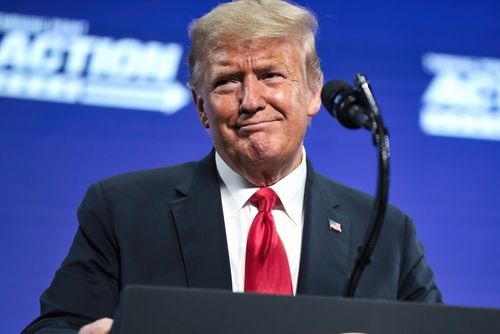
President Donald Trump just signed off on a tax refund plan that could send billions back into the pockets of Americans. The ‘D.O.G.E Dividend’, named after Elon Musk’s Department of Government Efficiency (D.O.G.E), will return 20% of the savings from Musk’s cost-cutting initiative directly to taxpayers. Trump confirmed the plan during a Miami Beach event on Wednesday, speaking to a nonprofit backed by Saudi Arabia’s sovereign wealth fund.
“There’s even under consideration a new concept where we give 20% of the D.O.G.E savings to American citizens and 20% goes to paying down debt,” Trump said. “The numbers are incredible, Elon, so many billions—hundreds of billions—and we’re thinking about giving 20% back to the American citizens.”
The announcement came just a day after Musk tweeted that he would “check with the President” in response to investor James Fishback, who has been advocating for the refund. Fishback has been pushing for a direct payout to taxpayers, arguing that D.O.G.E has saved enough to make it happen.
Musk’s D.O.G.E fires thousands, claims billions in savings
D.O.G.E has been aggressively cutting government spending, but not without controversy. The agency made bold claims about its success, saying it exposed fraud and slashed billions in waste, but some of those numbers haven’t held up under scrutiny.
Two of the most talked-about claims—a supposed Social Security fraud crackdown and an $8 billion savings in a Department of Homeland Security contract—turned out to be false.
Thousands of federal workers were fired last week under the initiative too, and now the government could be on the hook for unemployment benefits. According to Labor Department data, most of those fired employees qualify for up to $400 a week for 26 weeks. The exact financial toll is still unclear, but estimates say it could cost the government millions.
How much money will taxpayers actually get?
While the White House claims D.O.G.E has saved $55 billion, independent reviews don’t support that figure. Documents posted by the initiative on X show savings closer to $8.6 billion, which means the 20% dividend payout would be about $11 per taxpayer—a far cry from what many expected.
Despite that, Trump insists the plan is a long-term win. He pointed to the 75,000 federal workers who took voluntary buyouts as proof that D.O.G.E is cutting costs effectively. “This is a necessary change,” he told the audience in Miami Beach. “The United States is back and open for business.”
The speech was delivered to a crowd of business elites, including Vista Equity’s Robert Smith, 26North Partners’ Josh Harris, WeWork founder Adam Neumann, and Middle East envoy Steve Witkoff. Trump pitched his vision for economic recovery, emphasizing aggressive government downsizing and regulatory cuts.
Fishback, who originally proposed the D.O.G.E Dividend, argues that the initiative could save $2 trillion over two years, which would mean roughly $25,000 per taxpayer. Under Trump’s 20% refund plan, that would equal $5,000 per taxpayer—a major payout compared to current estimates.
However, Musk clarified on Twitter that no final amount has been decided. “Haven’t endorsed a specific amount,” he wrote Wednesday, adding that the refund may come in the form of a lower tax bill rather than direct cash payments.
On Friday, D.O.G.E announced it had discovered an additional $1.9 billion in misplaced Department of Housing and Urban Development funds. The agency also canceled $373 million in Education Department grants earmarked for Diversity, Equity, and Inclusion (DEI) training.
Another $900 million in academic tracking grants was scrapped last week, as D.O.G.E stretched its focus to target Pentagon spending. Musk has hinted that the military’s discretionary budget—a massive, often unchecked expense—is next on the chopping block.
* The content presented above, whether from a third party or not, is considered as general advice only. This article should not be construed as containing investment advice, investment recommendations, an offer of or solicitation for any transactions in financial instruments.



